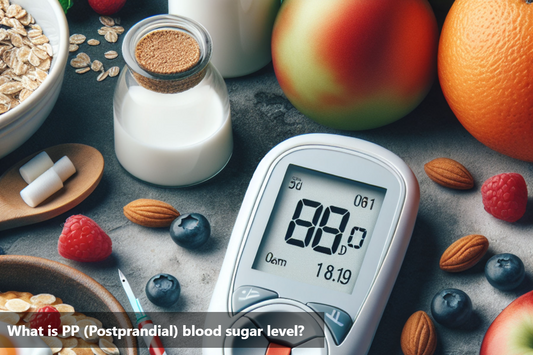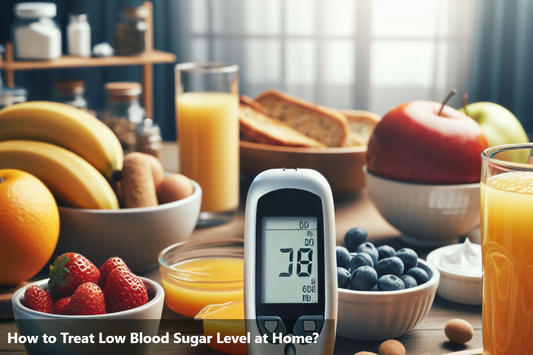The glycemic index (GI) measures how quickly certain foods raise blood sugar levels. Low-GI foods cause a gradual increase, while high-GI foods cause a rapid spike. Oats have a moderate GI and are a healthy choice for blood sugar management. Understanding the GI of oats is important for making informed dietary choices. Different oat varieties may have varying GI values. Combining oats with other foods can affect overall glycemic load. By considering the GI of oats, individuals can make healthier dietary decisions. Oats offer many benefits due to their favorable glycemic properties.
What is Glycemic Index?
The glycemic index (GI) is a numerical ranking system that measures how quickly and how much a carbohydrate-containing food raises blood glucose (blood sugar) levels after consumption compared to pure glucose or white bread, which are assigned a value of 100. Foods with a high GI cause a rapid increase in blood sugar levels, while those with a low GI result in a slower, more gradual increase in blood sugar levels.
Here's how the glycemic index is typically classified:
-
Low GI (55 or less): These foods are digested and absorbed slowly, resulting in a gradual rise in blood sugar levels. Examples include most non-starchy vegetables, legumes, whole grains, nuts, and seeds.
-
Medium GI (56-69): Foods with a medium GI cause a moderate increase in blood sugar levels. Examples include some fruits, whole wheat products, and certain types of rice.
-
High GI (70 or above): These foods are rapidly digested and absorbed, leading to a quick spike in blood sugar levels. Examples include refined grains, sugary snacks, sweets, and processed foods.
Glycemic Index of Oats
The glycemic index (GI) of oats can vary depending on several factors, including the type of oats, processing method, and cooking time. Generally, oats have a relatively low to moderate glycemic index compared to many other carbohydrate-rich foods. Here are approximate values for the glycemic index of different types of oats:
|
Type of Oats |
Glycemic Index (GI) Range |
|---|---|
|
Steel-Cut Oats |
42 - 55 |
|
Rolled Oats |
42 - 55 |
|
Quick Oats |
55 - 65 |
|
Instant Oats |
65 - 80 |
It's important to note that adding toppings or ingredients to oats, such as sugar, honey, fruit, or milk, can affect the overall glycemic index of the meal. Including protein, healthy fats, and fiber-rich foods along with oats can help mitigate the glycemic response and promote better blood sugar control. Overall, oats are a nutritious whole grain option that can be part of a balanced diet for individuals concerned about blood sugar levels.
Glycemic Index of Oats with Milk
When oats are consumed with milk, the glycemic index (GI) of the meal can be influenced by several factors, including the type of oats, the amount of milk, and any other ingredients added. Here's an approximate overview of the glycemic index of oats when consumed with milk:
|
Type of Oats |
Glycemic Index (GI) |
Notes |
|---|---|---|
|
Steel-Cut Oats |
Low |
Opt for low-fat, unsweetened milk. |
|
Rolled Oats |
Moderate |
Choose unsweetened milk. |
|
Quick Oats |
Slightly higher |
Pick milk without added sugars. |
|
Instant Oats |
Highest |
Select milk options without added sugars. |
General Considerations:
-
Opt for less processed oats.
-
Choose unsweetened, lower-fat milk.
-
Include protein, healthy fats, and fiber-rich foods for balanced blood sugar response.
Overall, when oats are consumed with milk, the glycemic index of the meal can vary based on various factors. Opting for less processed forms of oats, such as steel-cut or rolled oats, and choosing milk options without added sugars can help mitigate the glycemic response and promote better blood sugar control. Additionally, incorporating protein, healthy fats, and fiber-rich foods along with oats and milk can further help stabilize blood sugar levels and provide a balanced meal.
Bottom Line
In conclusion, understanding the glycemic index of oats is crucial for effectively managing blood sugar levels. Oats, known for their low glycemic index, are a valuable addition to a balanced diet due to their slow digestion and steady release of glucose into the bloodstream. By incorporating oats into daily meals, individuals can experience more stable blood sugar levels throughout the day.
Moreover, the glycemic index of rolled oats, a popular oat variant, remains favorable for those seeking to regulate blood sugar. The minimal processing involved in rolled oats helps maintain their low glycemic index, making them a healthy choice for various oat-based dishes.
When oats are combined with milk, the overall glycemic index of the meal may increase slightly. However, the glycemic load of oats with milk is still relatively moderate compared to high-glycemic foods. This combination provides a balanced mix of nutrients and energy while minimizing rapid spikes in blood sugar levels.
Incorporating oats, especially varieties like Quaker oats with proven low glycemic index values, into one's diet can have significant health benefits. This simple dietary change can contribute to improved blood sugar management, overall health, and general well-being.
Confused if a product is Diabetic friendly or not? DiabeSmart is the first Food product range exclusively designed for Diabetics. Clinically tested and great tasting; so your food habits don't need to change.
This Blog post is an initiative by DiabeSmart, to provide accurate and Nutritionist / Doctor approved information related to Diabetes. DiabeSmart is India's first Food brand designed specifically for Diabetics, that has been clinically tested on Diabetics and Pre-Diabetics to deliver 55% - 70% lower Sugar spikes. DiabeSmart is part of Lo! Foods - India's leading brand for Everyday Functional Health foods.















